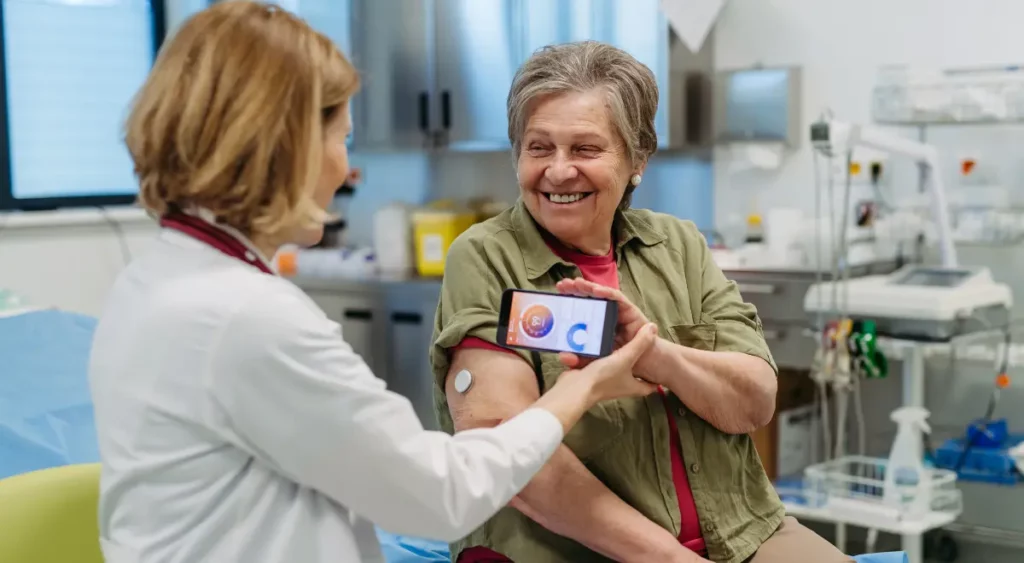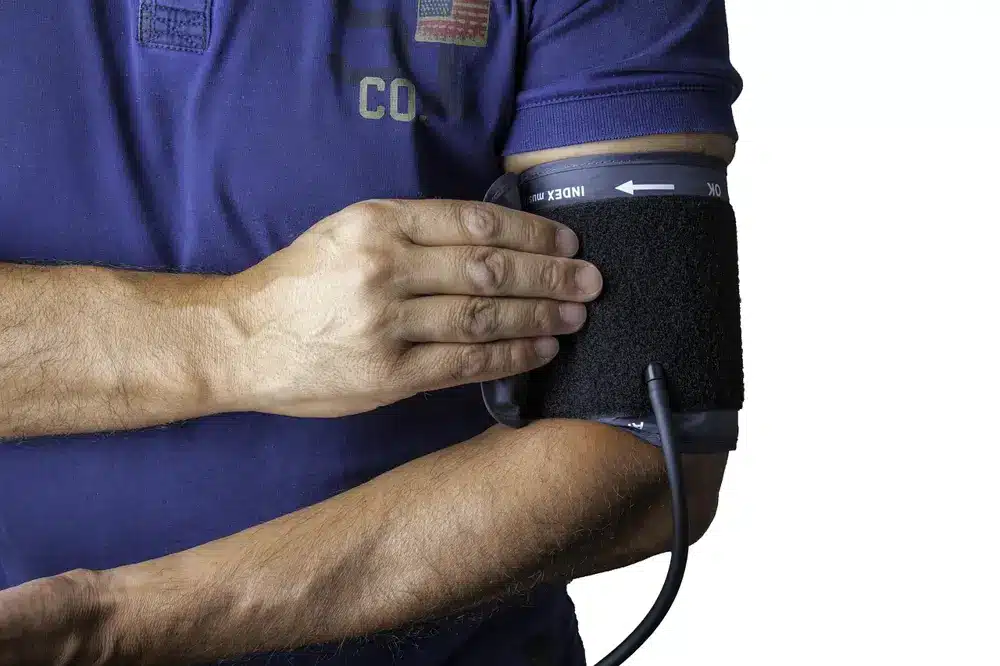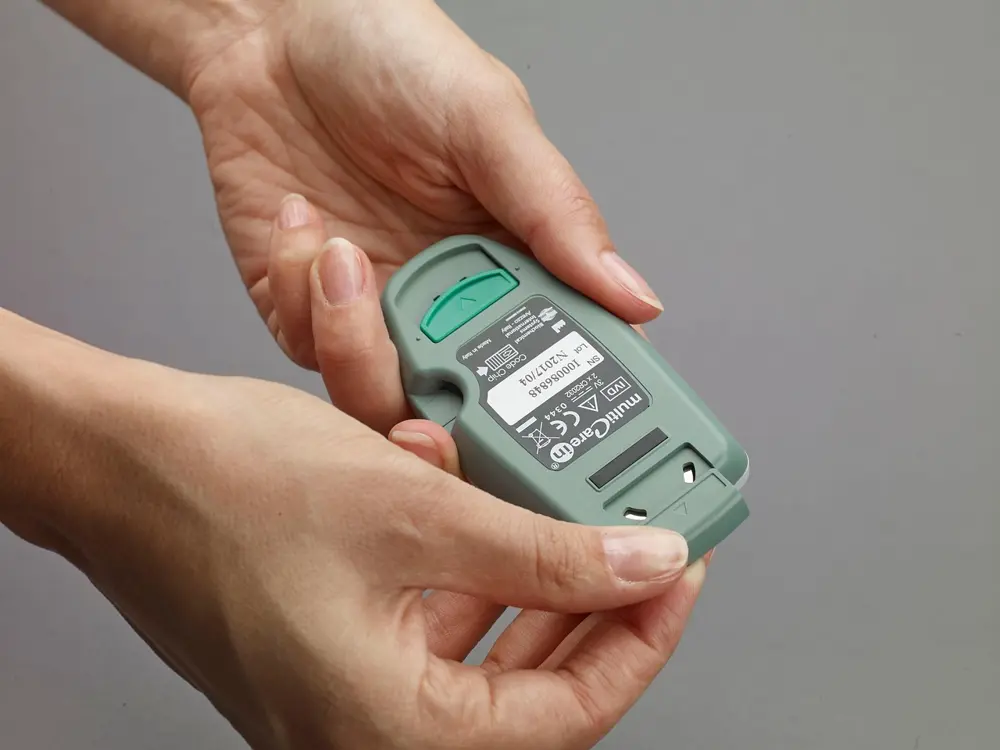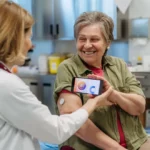How RPM Devices Improve Hypertension and Diabetes Outcomes in Medicare Populations

Remote patient monitoring (RPM) is transforming chronic care for Medicare beneficiaries. CMS defines RPM as “a patient collecting their health data (e.g., blood pressure, glucose) using a connected medical device that automatically transmits the data to their provider”. In practice, Medicare (Traditional and Advantage, including dual-eligibles) reimburses RPM under CPT 99453–99454 and 99457–99458. For example, 99453 covers initial device setup and patient education, 99454 covers monthly device monitoring (≥16 days of data), and 99457/99458 cover the clinical management time spent reviewing that data. CMS will reimburse the same way regardless of device type, so providers can use FDA-cleared blood pressure cuffs, glucometers, or CGMs in RPM programs. (Per CMS rules, devices must meet the FDA’s definition of a medical device and collect/transmit data on ≥16 days per 30-day billing period.)
Table of Contents
ToggleRPM aligns with Medicare’s quality goals for chronic disease. For hypertension and diabetes—the two leading RPM use cases in Medicare—remote monitoring has been shown to improve control and reduce costs. For example, a recent AJMC study of 1,594 Medicare patients with stage-2 hypertension found that a one-year RPM program (with monthly care calls) lowered mean systolic BP from 152 mmHg to 132 mmHg. In practical terms, this type of intervention cut the share of patients with stage-2 hypertension from 100% to 25% (a 75% relative reduction) over 12 months. Those BP improvements translate into large downstream benefits: one analysis projected a 40% reduction in heart attacks and strokes if Stage-2 patients achieve such BP control. In fact, an American Heart Association study of high-risk hypertensive patients reported that a pharmacist-led telemonitoring program roughly halved 5‑year rates of heart attack or stroke compared to usual care, saving about $1,900 per patient over five years by avoiding costly events. Similarly, Medicare evaluations have found that RPM for hypertension often includes rapid medication adjustment by care teams, resulting in faster BP control. In short, RPM for hypertension in Medicare yields substantial clinical and economic gains by enabling more frequent, real-time BP monitoring and timely treatment changes.

Key examples of CMS-approved RPM devices include cellular-enabled blood pressure monitors and glucometers (blood sugar meters), along with continuous glucose monitors (CGMs) where covered. For hypertension, FDA-cleared Bluetooth/4G blood pressure cuffs automatically upload readings for the care team. For diabetes, patients use connectable glucometers or CGMs to log daily glucose. (Medicare now covers CGMs for insulin-treated patients.) These devices empower proactive care: clinicians can spot rising BP or glucose trends and intervene (often by phone or telehealth) before an emergency arises. For instance, patients with newly uncontrolled hypertension or diabetes can trigger extra education or medication titration. In randomized trials, RPM has improved chronic disease self-management and adherence: the HHS notes that “sending regular blood pressure readings allows timely adjustments to treatment plans and early intervention” [10]. Similarly, in Medicare T2D cohorts, telehealth (including device monitoring) was linked to slightly lower average HbA1c and higher rates of meeting glycemic targets. (CMS data show 57% of RPM episodes are for hypertension and 13% for diabetes in Traditional Medicare -reflecting the focus on these high-burden conditions.) In practice, RPM is often delivered alongside Chronic Care Management (CCM): providers can bundle RPM data review with CCM services for complex patients.

Medicare Reimbursement & CPT Codes for RPM
Under current CMS policy, providers bill RPM using dedicated CPT codes. Key codes are:
- 99453: One-time setup of RPM devices and patient training.
- 99454 – Monthly monitoring with device (≥16 days of data collection).
- 99457 – Clinical staff/physician monitoring time (≥20 minutes per month).
- 99458 – Each additional 20 minutes (beyond 99457) in the same month.
These are billable once per 30‑day period per patient. Medicare pays the same bundled rate regardless of device brand, making RPM financially viable. (All RPM devices must be FDA-cleared medical devices; for example, CMS will only cover “connected blood pressure cuffs” or “self-monitoring blood glucose meters” that meet FDA standards.) In practice, providers have reported that integrating RPM can generate notable per-patient annual returns in new reimbursement, while improving quality metrics.
RPM Outcomes in Medicare Hypertension
- Significant BP reduction: RPM programs in Medicare have shown large drops in blood pressure. In one health system, mean SBP fell ~20 mmHg over a year of RPM care.
- Fewer CV events: As noted, AHA research found RPM halved serious CV events (heart attack/stroke) in high-risk hypertensives. By better controlling BP, RPM can translate to roughly 40% fewer cardiovascular events in Stage-2 hypertensives.
- Cost savings: Preventing those events yields savings. The cited AHA study estimated ~$1,900 saved per patient over 5 years. Other analyses similarly highlight that better HTN control avoids costly ER visits and hospitalizations.
- Higher engagement: Medicare patients often adhere well to RPM. A community RPM initiative reported >90% patient retention and clinician surveys indicated 94% found RPM improved BP control.
Together, these outcomes suggest RPM can help Medicare providers meet quality benchmarks for hypertension (e.g. HEDIS BP control) while reducing complications and overall costs.
RPM Outcomes in Medicare Diabetes
RPM for diabetes (via glucometers or CGMs) also drives better management, especially for high-risk patients. Continuous or frequent glucose readings allow faster medication titration. In Medicare analyses, telehealth-enabled diabetes care saw modest improvements in glycemic control: one Tulane study found a small but statistically significant drop in A1c (≈0.08%) and more patients achieving HbA1c<7% with remote care. Another review notes RPM is most effective for patients with very high starting A1c or at transition points (e.g. starting insulin).
Key benefits in diabetes management include:
- Improved adherence: Patients receive feedback and reminders via RPM platforms, boosting daily glucose checks and diet/exercise adjustments.
- Reduced hypoglycemia: Continuous CGM data (covered by Medicare for eligible patients) can alert patients and clinicians to dangerously low sugar.
- Potential cost offset: Averting diabetic emergencies (hypoglycemic hospitalizations) lowers total cost of care for payers and health systems. While overall A1c gains may be smaller than for HTN, even modest improvements in control reduce long-term complications.
Taken together, RPM allows Medicare patients to actively manage their diabetes from home, aligning with CMS goals for preventative care and chronic disease management.
CMS Evidence, Outcomes & Cost Savings
CMS and research organizations highlight RPM’s value. HHS notes that by transmitting vitals remotely, RPM enables providers to “intervene promptly…potentially reducing hospital admissions”. A recent Peterson Center report synthesizing Medicare data concluded that RPM technologies “can improve outcomes and reduce spending” for hypertension and diabetes. In particular, dedicated RPM care teams (nurses/pharmacists) have been shown to quickly optimize blood pressure medications, leading to faster control.
From the payer perspective, widespread RPM could slash costs. For example, if 40% of serious CV events are prevented in hypertensive patients, Medicare would save on heart attacks, strokes, and hospital stays. CMS estimates that shifting more chronic care to RPM yields net savings by avoiding inpatient care. Moreover, RPM supports CMS’s push for value-based care: by improving chronic disease metrics, RPM programs may also enhance Medicare Advantage Star ratings or ACO performance scores.
CPT code 99457 even allows Medicare Advantage plans to cover “remote physiologic monitoring” under value-based care arrangements. Some MA plans are proactively offering RPM to high-need members, often combining it with Chronic Care Management services to support dual-eligible and disabled beneficiaries. In all cases, RPM aligns with CMS policy: “RPM allows a patient to collect their own health data…to treat or manage (remotely monitor) the patient’s condition”, exactly as CMS envisioned for telehealth expansion.
Common RPM Devices in Medicare
RPM programs for Medicare patients rely on easily used, FDA-approved devices. The most common are:
- Connected Blood Pressure Monitors: Digital arm cuffs that automatically transmit readings via cellular or Bluetooth. Brands like Omron, A&D Medical, and Qardio are often used. These are FDA-cleared medical devices and meet CMS requirements.
- Glucometers (Blood Glucose Meters): Portable glucose monitors for self-testing blood sugar. Modern meters (OneTouch, Accu-Chek, etc.) can upload data to cloud platforms. Medicare covers a range of home glucometers and test strips under existing durable medical equipment codes, and these are integrated into RPM programs.
- Continuous Glucose Monitors (CGMs): Already FDA-approved and covered by Medicare for insulin-dependent patients, CGMs continuously measure interstitial glucose. CGMs like Dexcom or Freestyle Libre are increasingly paired with RPM systems to give real-time trends.
- Additional tools: Some programs also use FDA-approved wireless weight scales (for CHF or metabolic syndrome), pulse oximeters (for oxygen levels), or ketone meters. But for hypertension and diabetes, BP cuffs and glucose meters are primary.
By deploying these devices, providers can “closely track blood pressure and glucose over time” and catch issues early. For example, one 180-day RPM analysis showed hypertensive patients with very high baseline BP (≥140/90) averaged a 16 mmHg SBP drop. Similarly, diabetic patients using connected glucometers reported fewer episodes of uncontrolled hyperglycaemia. These real-world results echo clinical trials: for instance, one trial found just 10–15 minutes/month of RPM coaching could significantly lower HbA1c in patients with uncontrolled diabetes.
Frequently Asked Questions (FAQs)
Remote Patient Monitoring (RPM) uses connected medical devices—such as blood-pressure cuffs or glucose meters—to collect patients’ health data at home and automatically transmit it to their provider for review.
RPM allows continuous tracking of blood pressure and glucose levels, enabling earlier intervention, increased adherence, and fewer hospitalizations. It’s particularly beneficial for Medicare beneficiaries managing chronic diseases.
RPM is most effective for chronic conditions such as hypertension, diabetes, congestive heart failure, COPD, and obesity—where continuous monitoring improves clinical outcomes.
- 99453 – device setup & education
- 99454 – data collection ≥ 16 days
- 99457 – clinical monitoring ≥ 20 minutes
- 99458 – each additional 20 minutes
Yes. Cardiologists, endocrinologists, and other specialists can use RPM to deliver continuous care, reduce complications, and demonstrate value under CMS quality programs.
CMS requires RPM devices to record and transmit data on at least 16 days within a 30-day period for billing eligibility.
No. Telehealth refers to virtual appointments, while RPM involves ongoing collection of health data from connected devices for clinical review.
RPM improves disease control, reduces hospital visits, increases patient engagement, and enhances provider workflow—supporting value-based care goals.
- Device connectivity issues
- Low patient tech literacy
- Workflow integration with EHRs
- Ensuring accurate billing and compliance
RPM works seamlessly with CCM and PCM by providing real-time data that supports care plan adjustments and monthly reimbursement for ongoing management.
Studies show RPM can lower average systolic blood pressure by ~20 mmHg within 12 months of continuous monitoring and care coordination.
Yes. Medicare covers RPM for beneficiaries with chronic conditions when FDA-cleared devices collect and transmit data for ≥ 16 days per month.
Absolutely. RPM helps detect rising blood pressure or glucose early, allowing care teams to intervene before emergencies occur, significantly reducing readmission rates.
Yes. CMS and OIG advise providers to use RPM only when clinically appropriate and with documented consent to avoid improper claims or device abuse.
Telehealth involves live interactions; RPM is asynchronous and data-driven — it delivers continuous insight into patients’ vitals between appointments.
Cardiologists, endocrinologists, nephrologists, and primary-care physicians managing hypertension, diabetes, and heart disease see the greatest benefits from RPM.
- Connected blood-pressure monitors
- Glucometers
- Continuous glucose monitors (CGM)
- Weight scales
- Pulse oximeters
Yes. Practices need structured processes for patient onboarding, data review, and care coordination to integrate RPM into daily operations.
- Reductions in blood pressure
- Better A1c control
- Fewer ER visits
- Higher quality scores under value-based payment models
By enhancing preventive care and reducing hospital costs, RPM directly supports Medicare’s transition to value-based models focused on quality and outcomes.
Conclusion
For Medicare-focused payers and providers, RPM offers a proven, reimbursable pathway to better chronic care. By leveraging CMS coverage (CPT 99453–99458) and patient-friendly devices, practices can achieve measurable improvements in hypertension and diabetes outcomes while generating new revenue. Strong evidence—from CMS notices, NIH studies, and AHA research—supports RPM’s impact on outcomes and cost savings.
HealthArc’s integrated RPM platform streamlines this process. We provide FDA-approved BP cuffs, glucometers, and CGMs connected to our patient dashboard, so clinicians see data in real time. Our solution also supports Chronic Care Management workflows, ensuring alignment with CMS policy.
Ready to improve outcomes for your Medicare population? Contact HealthArc to schedule a demo or learn how our RPM and CCM programs can enhance patient care and reduce costs in your organization.
Sources:
Latest CMS guidance and studies from CMS.gov, HHS, NIH/Med Care, AHA, and industry reports.
- Remote Patient Monitoring | CMS
- MLN901705 – Telehealth & Remote Patient Monitoring
- Effect of Remote Patient Monitoring on Stage 2 Hypertension | AJMC
- Remote Patient Monitoring Is Associated with Improved Outcomes in Hypertension: A Large, Retrospective, Cohort Analysis
- For people with high blood pressure, telemonitoring may cut heart attack, stroke rate by 50% | American Heart Association
- https://connectwithcare.org/wp-content/uploads/2025/05/Peterson-Evolving-Remote-Monitoring-Report-1.pdf
- Telehealth Research Recap: Remote Patient Monitoring
- Telehealth and Medicare Type 2 Diabetes Care Outcomes: Evidence From Louisiana – PubMed
- Remote Patient Monitoring Software for Better Care | HealthArc
- Patient Outcomes Using Remote Patient Monitoring | 100Plus
Most Recent Blogs
Categories
Related Blog
- August 25, 2025 | Read Time: 13 mins
How Can “One Big Beautiful Bill” Boost RPM Programs by $50B?
The “One Big Beautiful Bill,” signed July 4, 2025, directs $50B over...
Learn More- August 22, 2025 | Read Time: 17 mins
HealthArc Platform vs RPM Software Solutions
Is your healthcare organization trying to pick a remote patient monitoring solution?...
Learn More- August 8, 2025 | Read Time: 17 mins
Remote Patient Monitoring ROI in 2026: Costs, Benefits & Is It Worth It?
With a giant sweep taking place in the digital transformation of at-home...
Learn More


